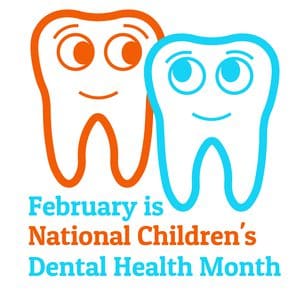
Did you know that it’s National Children’s Dental Health Month? Parents have a lot of questions about their kids’ teeth. Each February, the American Dental Association (ADA) takes this opportunity to raise awareness regarding children’s dental health with tips and tricks. And, you can use your benefit accounts to pay for much of it!
Children’s Dental Care 101
According to the Centers for Disease Control, children with poor dental health miss more school and receive lower grades than children with good dental health. Still, tooth decay in kids is not so unusual:
- 1 in 5 children aged 5 to 11 has at least one decayed tooth in need of treatment
- 1 in 7 children aged 12 to 19 has at least one decayed tooth in need of treatment
- Children in lower-income households experience more tooth decay than those in higher-income households
Efforts to prevent tooth decay need to begin in infancy. It’s important for parents to start a good dental health routine as soon as teeth start coming in. The parent should start brushing them until the child is old enough to do it themselves. And it’s important to set a good example by brushing and flossing yourself, so they can learn by watching you.
How should we care for children’s teeth?
The ADA shares the following tips for young children:
- When the first tooth appears, start brushing twice a day with a soft, small toothbrush and a tiny dot of toothpaste.
- Schedule the first dental visit about 6 months after the first tooth comes in.
- Keep brushing their teeth as directed up to age 3, then graduate to a pea-size dab of paste and keep that going until about 6 years old.
- They have to spit, not swallow the paste, so keep an eye on them until they do this on their own, usually around age 6 or 7
- Even when they only have their first two teeth, it’s time to start flossing. There are plenty of videos online that can help, or ask your child’s dentist for more information.
- Schedule cleanings and exams as directed by your dentist.
- Ask your dentist for recommendations on fluoride, a mineral treatment that can protect good tooth enamel and repair weak enamel.
And here are some tricks that might help make it more fun and easier for children and parents both:
- Look for a pediatric dentist that makes the experience fun. Some have movies, toys, and rewards for a cavity-free visit. Making your child feel special for their accomplishments can set the stage for successful future visits.
- We should all be brushing for 2 minutes — kids included. That may seem like an eternity to children and keeping them distracted long enough to complete the process may seem impossible. To pass the time, read a short story in different voices, look for an age-appropriate toothbrushing app on your phone, or sing along with these videos.
How should older children care for their teeth?
The ADA updates their recommendations for older kids. Some suggestions include:
- Make sure they continue to brush twice a day and floss regularly. Your dentist may also recommend a dental sealant to further protect against tooth decay.
- For kids who are also athletes, it’s important to look into mouth guards to protect teeth from injuries that can lead to cracked or broken teeth, or even a complete tooth extraction.
- And finally, maintain a dental cleaning and exam schedule as directed by your dentist.
Help with dental care costs
If your employer sponsors certain benefit account(s) plans, you have great options to help cover the costs of dental care. Here are some examples.
- If you have a health Flexible Spending Account (FSA), most dental treatments (preventative, restorative, or replacement such as crowns, bridges, and dentures) are covered.
- If you have a Limited Purpose Flexible Spending Account (LPFSA), most dental treatments (preventative, restorative, or replacement) are covered.
- Much like an FSA, if you have a Health Savings Account (HSA), you can use those funds for most dental treatments. whether preventative, restorative, or replacement.
How about a Health Reimbursement Arrangement? These employer–funded accounts are different than the above because the employer decides which products and services are eligible for reimbursement. If enrolled in an HRA, check with your benefits administrator about eligible expenses.
Raising little ones is a lot of work, and dental health can be an especially tough routine to teach. But with these tips and tricks you may find it easier to establish a successful and lifelong routine. And having benefit accounts that can help pay for the costs will make it easier, too!
For 40 years, DataPath has been a pivotal force in the employee benefits, financial services, and insurance industries. The company’s flagship DataPath Summit platform offers an integrated solution for managing CDH, HSA, Well-Being, COBRA, and Billing. Through its partnership with Accelergent Growth Solutions, DataPath also offers expert BPO services, automation, outsourced customer service, and award-winning marketing services.
